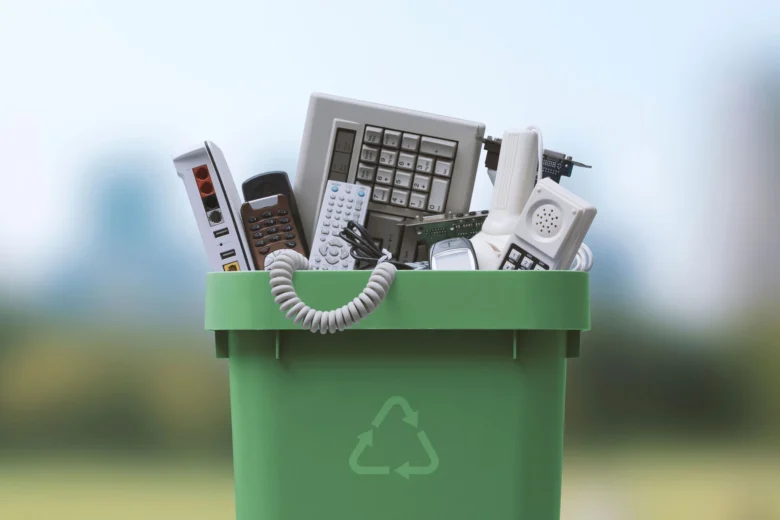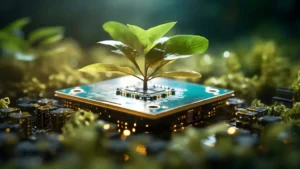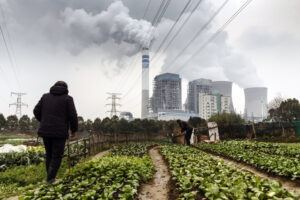In today’s disposable society, where waste is piling up faster than we can handle, the circular economy is a welcome alternative. Sustainable design can eliminate waste and extend the lifespan of products and materials. Ecotech is changing this trend. Smart and eco-friendly technologies are enabling a zero-waste future. Ecotech is helping to scale the circular economy through AI-driven recycling systems and blockchain-based supply networks. It not only reduces waste but also rethinks the way we design, create, use, and dispose of things. An increasing number of companies are adopting circular models and eco-tech to transition from a linear “take-make-dispose” model to a resource reuse model. This article explores how ecotech can strengthen the circular economy and realize waste recycling.
Interpretation of the Circular Economy
The circular economy is a systematic economic development strategy that benefits businesses, society, and the environment. The circular economy is regenerative, unlike the waste of the linear economy. Products are designed to be reused, repaired, refurbished, or recycled. Imagine if human output followed the natural cycle and nothing was wasted. However, to scale this system, good intentions alone are not enough. Innovation, collaboration, and, most importantly, technology are essential. Ecotech is here to help. These innovative technologies provide real-time material tracking, waste sorting, product design, and environmental impact monitoring. To minimize resource development and environmental damage, materials need to circulate in the economy for as long as possible.
Ecotech Improves Waste Tracking and Transparency
In a circular economy, it is difficult to determine where materials come from and where they go. Traditional supply networks are not transparent and make responsible reuse of materials difficult. Blockchain, IoT, and AI analytics are the solutions for ecotech. Blockchain technology can securely and transparently capture the entire lifecycle of products, from raw material to waste disposal, ensuring accountability. IoT sensors monitor energy, waste, and resource consumption in real time. These insights help companies quickly identify and address inefficiencies. Smart sensors can help manufacturers optimize resource consumption and eliminate waste in real time. Based on a large amount of data, AI can forecast waste and suggest sustainable solutions. Supply chains are efficient, circular, and environmentally friendly.
Smart Recycling: from Manual Sorting to AI/Robotics
Recycling is essential for environmental sustainability, but old processes are inefficient and sometimes produce low-quality materials. Ecotech is changing that. Waste separation is being automated and improved using artificial intelligence and robotics. These systems use computer vision and machine learning to quickly and accurately identify and separate plastic, metal, and glass. This can purify recyclables and reduce the amount of waste going to landfills. Smart bins with sensors can remind consumers whether items are recyclable, encouraging them to improve their consumption behavior. Chemical recycling technology can decompose plastic into its constituent parts, enabling their reuse in new products. Smart technology makes recycling easier and prevents valuable products from ending up in the environment.
Ecodesign: Creating products with an end in mind
The circular economy starts with design. Ecodesign means starting with products that can be reused, repaired, or recycled. This shift requires a rethinking of materials, production processes, and product life cycles. Ecotech’s digital tools that simulate the environmental impact of design decisions can help drive this shift. Software can help designers simulate product performance, identify waste points, and come up with sustainable alternatives. Companies can use recyclable materials and reduce the use of coatings or adhesives instead of mixed materials that are difficult to separate. Ecodesign can extend the life of products and reduce the environmental impact in waste-intensive industries such as clothing and electronics. Design technology makes it possible to create the final version before products are brought to market.
Eco-Tech in Manufacturing and Production Efficiency
Manufacturing is one of the most resource-intensive stages of a product. Companies can significantly reduce waste, energy, and environmental impact by implementing ecotechnologies. IoT-enabled smart factories can track water usage and pollution in real time, enabling resource-efficient transformation right away. Additive manufacturing (or 3D printing) is also disruptive, enabling precise output with minimal waste. It allows manufacturers to use only the materials needed for each product, reducing waste. Predictive maintenance is another ecotech that keeps machines running smoothly and eliminates spare parts and downtime. Ecotechnologies help factories become cleaner, leaner, and greener—crucial to the circular economy.
Conclusion
The circular economy offers an optimistic and practical solution to the growing waste and scarce resources. And ecotechnologies are making this vision a reality. From transparent supply chains and smarter recycling systems to sustainable product design and efficient manufacturing, these technologies are essential for closing the waste loop. They enable sustainable, successful, and scalable businesses. More importantly, they enable consumers, businesses, and communities to reduce their impact on the environment. Integrating ecotechnologies throughout the product lifecycle is not a trend; it is the cornerstone of a new economic model that balances profit and ecology. By embracing this synergy, we create a sustainable, circular future, a zero-waste future where everything has value.
FAQs
1. What is the circular economy?
The circular economy reduces waste by reusing, repairing, refurbishing, and recycling goods to extend their lifespan.
2. How do ecotechnologies contribute to the circular economy?
AI, IoT, and blockchain support the circular economy by improving waste monitoring, recycling, and the design and production of sustainable products.
3. Does AI improve recycling efficiency?
AI robots and systems can improve recycling efficiency by sorting waste, removing contamination, and improving recycled materials.
4. How does ecodesign contribute to sustainable development?
Ecodesign starts with materials and technologies that enable reuse, repair, and recycling, extending product life and minimizing waste.
5. Does the circular economy make business sense?
Absolutely. Ecotechnologies are helping many companies implement circular practices to reduce costs, increase revenue, and meet consumer demand for sustainability.




